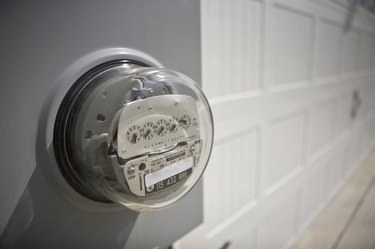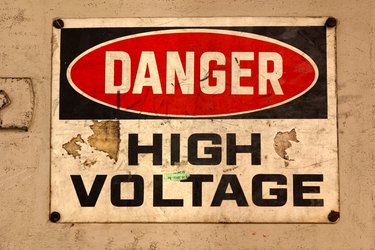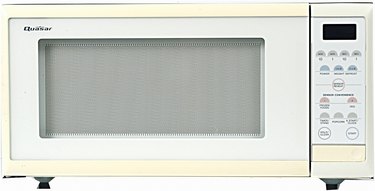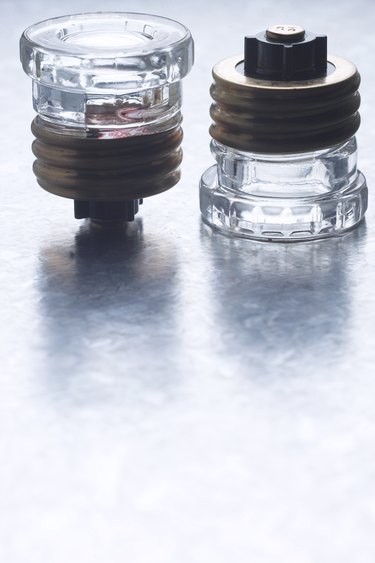 Modern homes consume electricity to run all kinds of devices. Image Credit: Comstock Images/Comstock/Getty Images
Modern homes consume electricity to run all kinds of devices. Image Credit: Comstock Images/Comstock/Getty Images
Some units used to describe electricity are familiar words. For instance, we put 60-watt bulbs in our bedside lamps and buy 1000-watt microwaves, or replace the 9-volt batteries in our smoke detectors and the 12-volt battery in a car. About the only time the average person encounters anything measured in amps, however, is when he or she has to replace a fuse. Perhaps that's why the meaning of amps is a mystery to many.
Video of the Day
Volts
 Household current in the United States is a standard 120V. Image Credit: Hemera Technologies/AbleStock.com/Getty Images
Household current in the United States is a standard 120V. Image Credit: Hemera Technologies/AbleStock.com/Getty Images
Electricians and physicists use volts to measure the difference in electrical charge between two points. If you use the flow of water in a pipe as an analogy for electrical current, then voltage is similar to the water pressure in that pipe, and high voltage is equivalent to high "water pressure." In the United States, household current is standardized at 120V, though standard voltage varies from country to country and sometimes within a country.
Watts
 A typical microwave oven consumes about 1000W of electricity on high. Image Credit: Zedcor Wholly Owned/PhotoObjects.net/Getty Images
A typical microwave oven consumes about 1000W of electricity on high. Image Credit: Zedcor Wholly Owned/PhotoObjects.net/Getty Images
Electrical devices convert electricity to another form of energy such as heat or motion. For example, light bulbs convert electricity to light (and heat), and fans convert it to the motion of their blades. The rate at which devices consume electrical energy to make this change is measured in watts. When turned on, a 100W light bulb consumes a constant 100W of electricity. A microwave oven might consume 1100W on high, but only 400W on low. Still using the water analogy, the wattage is equivalent to the amount of water needed to fill a container; light bulbs are small containers and air conditioners are large.
Amps
The "electrical pressure" of household current is a constant value, 120V in the United States. The amount of electricity needed to run a device is also a known value, such as 100W for a light bulb or 1500W for a space heater. Amperes, or amps, are the units used to measure the amount of current flowing through an electrical circuit to power that bulb or heater. Calculating the number of amps of current any device draws is simple arithmetic: divide the watts needed to run the item by the voltage of the current. For instance, a 100W light bulb on 120V current draws 0.83 amps (120 / 100 = 0.83).
Fuses
 Typical replacement fuses for a home fusebox Image Credit: Hemera Technologies/AbleStock.com/Getty Images
Typical replacement fuses for a home fusebox Image Credit: Hemera Technologies/AbleStock.com/Getty Images
Fuses and breakers are safety devices inserted into electrical circuits to prevent overloads. They are rated in amps, such as 15-amp or 20-amp fuses and 20-amp breakers. If the current passing through a fuse exceeds its rating, the strip of metal inside melts. When this happens the fuse blows, the circuit opens and all the devices shut down.
The current flowing through a circuit is the combined wattage of all operating devices divided by the voltage. On a 120V circuit, power consumption beyond 1800W will blow a 15-amp fuse (1800W / 120V = 15 amps). For example, if you have eight 100W light bulbs lit and turn on a microwave that uses 1100 watts, the total of 1900W will blow the fuse. If one bulb is lit, the total draw is 1200W and the fuse will remain intact. On the same circuit, a 20-amp fuse would allow you to use 2400W without an interruption of power.







































